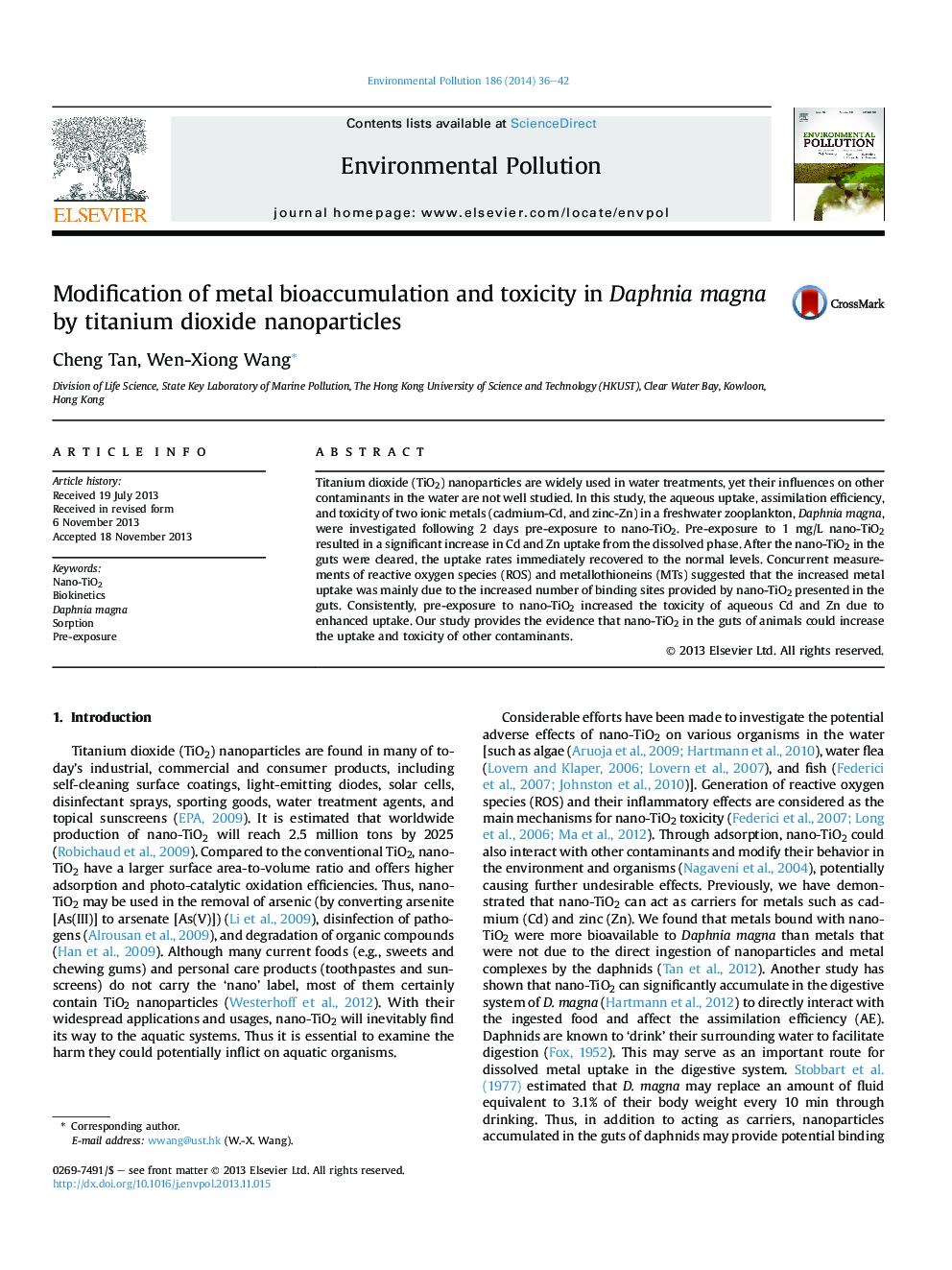| Article ID | Journal | Published Year | Pages | File Type |
|---|---|---|---|---|
| 6318344 | Environmental Pollution | 2014 | 7 Pages |
â¢Dissolved Cd and Zn uptake in daphnids increased significantly after nano-TiO2 pre-exposure.â¢Aqueous toxicity of Cd and Zn also increased after nano-TiO2 pre-exposure.â¢Dietary assimilation of Cd and Zn was not affected after nano-TiO2 pre-exposure.â¢Metal uptake recovered to normal levels after nano-TiO2 in the guts were removed.â¢Nano-TiO2 in the guts of animals could increase the uptake and toxicity of other contaminants.
Titanium dioxide (TiO2) nanoparticles are widely used in water treatments, yet their influences on other contaminants in the water are not well studied. In this study, the aqueous uptake, assimilation efficiency, and toxicity of two ionic metals (cadmium-Cd, and zinc-Zn) in a freshwater zooplankton, Daphnia magna, were investigated following 2 days pre-exposure to nano-TiO2. Pre-exposure to 1Â mg/L nano-TiO2 resulted in a significant increase in Cd and Zn uptake from the dissolved phase. After the nano-TiO2 in the guts were cleared, the uptake rates immediately recovered to the normal levels. Concurrent measurements of reactive oxygen species (ROS) and metallothioneins (MTs) suggested that the increased metal uptake was mainly due to the increased number of binding sites provided by nano-TiO2 presented in the guts. Consistently, pre-exposure to nano-TiO2 increased the toxicity of aqueous Cd and Zn due to enhanced uptake. Our study provides the evidence that nano-TiO2 in the guts of animals could increase the uptake and toxicity of other contaminants.
